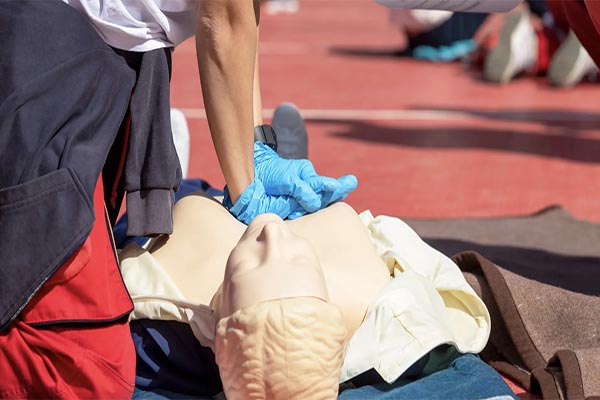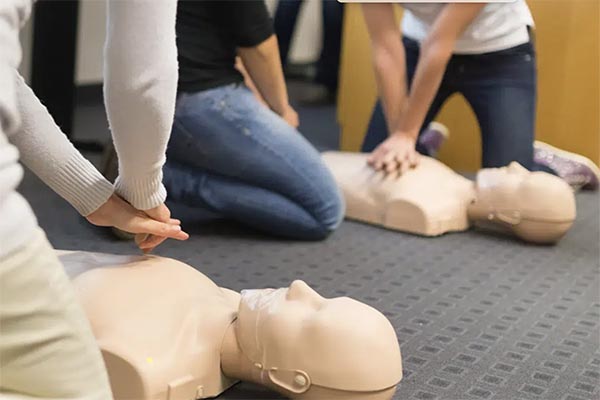
Emergency situations in schools can arise unexpectedly, and teachers, being at the forefront, need to be equipped to handle them efficiently. CPR training is a vital component of emergency preparedness for teachers, enabling them to respond promptly and effectively during critical situations. In this article, we will explore the importance of CPR training for teachers, the benefits it offers, and how it can be implemented in schools.
Cardiopulmonary Resuscitation (CPR) is a life-saving technique used during emergencies when a person’s breathing or heartbeat has stopped. Immediate CPR can double or even triple a victim’s chance of survival. For teachers, knowing CPR can make a significant difference in critical situations, potentially saving the lives of students or colleagues.

Schools are bustling environments with children who are often active and energetic. Accidents or health emergencies can occur at any time, and teachers are often the first to respond. CPR training for teachers equips them with the skills needed to manage situations such as:
Apart from the obvious physical benefits, CPR training also offers psychological advantages. Teachers who are trained in CPR often feel more confident and empowered to handle emergencies. This sense of preparedness can alleviate anxiety and stress, contributing to a safer and more secure school environment.
Integrating CPR training into schools involves a few critical steps to ensure that all teachers are adequately prepared. Here are some effective strategies:
Schools can collaborate with certified organizations like the American Red Cross or the American Heart Association to conduct CPR training sessions. These organizations have the expertise and resources to provide comprehensive training, ensuring that teachers receive accurate and up-to-date information.
CPR skills need to be refreshed regularly to ensure proficiency. Schools should schedule annual or bi-annual training sessions for teachers. This ensures that teachers remain confident in their abilities and are up-to-date with the latest CPR techniques.
By including CPR training as part of the professional development curriculum, schools can emphasize its importance and ensure that it receives the attention it deserves. This approach also encourages teachers to view CPR training as an integral part of their teaching responsibilities.
While CPR training is critical, schools may encounter challenges in implementing it effectively. Addressing these challenges is essential to ensure successful training programs.
Budget limitations are a common concern for many schools. However, CPR training is a worthwhile investment in student and teacher safety. Schools can explore funding opportunities or grants from government or private organizations dedicated to enhancing school safety.
Finding time for CPR training amidst a busy school schedule can be challenging. Schools can overcome this by offering multiple training sessions at different times, allowing teachers to choose sessions that fit their schedules.
Some teachers may be hesitant to participate in CPR training due to a lack of confidence or fear of not performing correctly. Encouraging a supportive and non-judgmental training environment can help alleviate these concerns. Highlighting success stories where CPR has made a difference can also motivate teachers to engage in the training.

The benefits of CPR training extend beyond individual schools, contributing to a culture of preparedness and safety in the broader community.
When teachers are trained in CPR, they become valuable assets not only to their schools but also to their communities. Their ability to respond to emergencies can make a difference in various settings outside of school, such as at home, in public spaces, or during community events.
Schools can take CPR training a step further by introducing basic CPR concepts to students as part of health education. This not only empowers students with essential life skills but also fosters a sense of responsibility and community awareness.
Implementing CPR training in schools sends a powerful message about the importance of safety and preparedness. It encourages a culture where everyone, from teachers to students and parents, recognizes the value of being prepared for emergencies.
CPR training is an essential aspect of emergency preparedness for teachers. By equipping teachers with the knowledge and skills to perform CPR, schools can enhance safety and ensure that teachers are ready to handle emergencies effectively. Despite potential challenges, the benefits of CPR training are substantial, contributing to a safer school environment and a more prepared community. By prioritizing CPR training, schools can make a significant difference in the lives of students, staff, and the community at large.
Take the next step in becoming a proactive member of your school and community by getting your CPR certification today. Enroll at CPR Classes Near Me to gain the skills and confidence needed to make a life-saving difference in emergency situations. Find a class that fits your schedule and join the growing number of individuals committed to creating safer environments for everyone. Visit CPR Classes Near Me now to learn more and sign up!
Our primary goal is to ensure that you receive a top-quality CPR/First Aid certification. With our in-person training in Austin, you can learn CPR and BLS in just one class. Your presence is all that’s needed to continue with your lesson! During your session, you will complete all the live-training components necessary to ensure you receive your AHA Healthcare Provider certification card.
Our CPR Classes in Austin are discounted to $59.95 (saving you $20), and our CPR + First Aid Class is offered at $79.95 (also saving you $20). When looking for CPR Classes, ensure to check for the American Heart Association seal. Other sites might seem cheaper but frequently lack the official training credentials demanded by employers.
Upon successful completion of the course, you will obtain a CPR certification that is valid for two years. The AHA CPR certification is recognized with the highest acceptance rate among employers nationwide.
Indeed! Enroll in any CPR Certification Austin BLS course to extend your certification for an additional two years. The in-person BLS course and the Renewal Class are identical.
Anyone capable of completing the course independently should consider pursuing CPR training and CPR Certification. There is no minimum age restriction for obtaining a CPR certification in Austin through the American Heart Association (AHA)..
CPR training needs to be carried out in person to guarantee its effectiveness. Our experienced instructors offer an engaging and dynamic learning experience. Typically, employers do not recognize CPR certifications that are obtained solely through online courses.
All authorized American Heart Association training centers are obligated to display the entire video. After a three-hour session with CPR Classes Near Me Austin, your BLS CPR eCard will be promptly issued by the instructor on the same day!